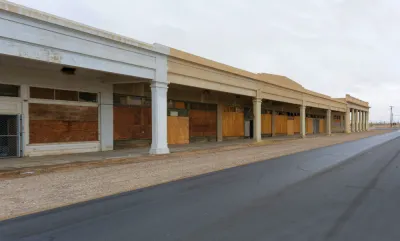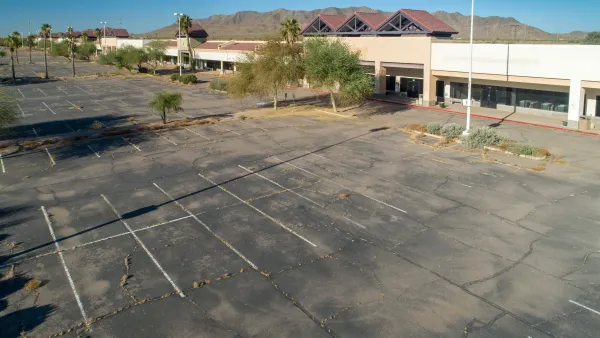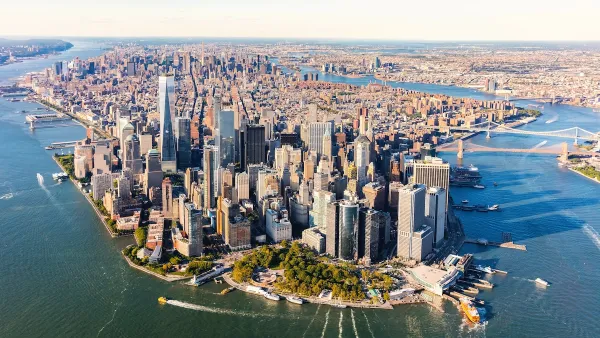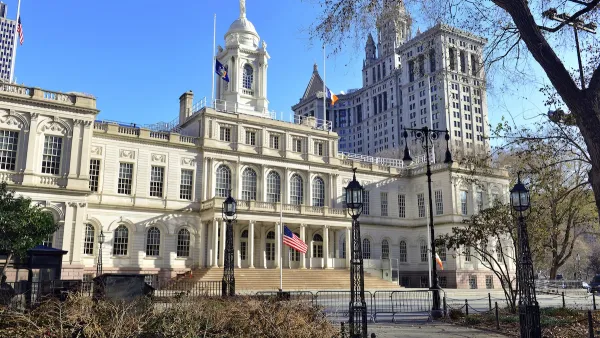The American strip mall may be a dying breed of commercial development, but could the buildings serve a new use as sustainable housing?

“Urban designer Peter Calthorpe has a plan for the shuttered and financially troubled strip malls that dot the suburban landscape: Convert the malls into housing that would be part of green communities where people could be closer to their jobs and get out of their cars.” As Jacques Leslie writes for Yale Environment 360, Calthorpe, in an interview, points out that “The idea of subdivisions for all was based on nuclear families, but now they represent just 24 percent of households in America. So we’re ready on many, many levels for more urban living — urban in the best, not the worst, sense.”
According to Calthorpe, “We’ve overbuilt single-family homes, and we need more multi-family housing. It turns out, especially now, after COVID, that strip commercial land is completely underutilized.”
“There is a large range of housing types that are appropriate, varying by site size, market, and construction costs. At the low-density end are live/work townhomes with small offices or flex space at the ground floor. Most common are “podium apartments” which have a concrete first floor containing parking and shops lining the streets with multi-story apartments or condos above. In areas well-served by transit, mid-rise buildings with ground floor shops and below-grade parking are possible.”
Calthorpe says that “If the strip commercial land in just the Bay Area and Los Angeles County were 100 percent redeveloped, that could provide 2.6 million units”—more than the estimated 2.5 million units California needs to eliminate its housing shortage.
Calthorpe acknowledges that housing production is “partly a zoning battle,” saying “local government is not a particularly advantageous place to argue for higher densities and infill. It needs state legislation enabling ‘as of right’ zoning [which overrides local obstacles such as design review boards].” Less restrictive zoning could pave the way for more innovative adaptive reuse, like the redevelopment of strip malls.
FULL STORY: How Ailing Strip Malls Could Be a Green Fix for U.S. Housing Crisis

Analysis: Cybertruck Fatality Rate Far Exceeds That of Ford Pinto
The Tesla Cybertruck was recalled seven times last year.

National Parks Layoffs Will Cause Communities to Lose Billions
Thousands of essential park workers were laid off this week, just before the busy spring break season.

Retro-silient?: America’s First “Eco-burb,” The Woodlands Turns 50
A master-planned community north of Houston offers lessons on green infrastructure and resilient design, but falls short of its founder’s lofty affordability and walkability goals.

Test News Post 1
This is a summary

Analysis: Cybertruck Fatality Rate Far Exceeds That of Ford Pinto
The Tesla Cybertruck was recalled seven times last year.

Test News Headline 46
Test for the image on the front page.
Urban Design for Planners 1: Software Tools
This six-course series explores essential urban design concepts using open source software and equips planners with the tools they need to participate fully in the urban design process.
Planning for Universal Design
Learn the tools for implementing Universal Design in planning regulations.
EMC Planning Group, Inc.
Planetizen
Planetizen
Mpact (formerly Rail~Volution)
Great Falls Development Authority, Inc.
HUDs Office of Policy Development and Research
NYU Wagner Graduate School of Public Service




























